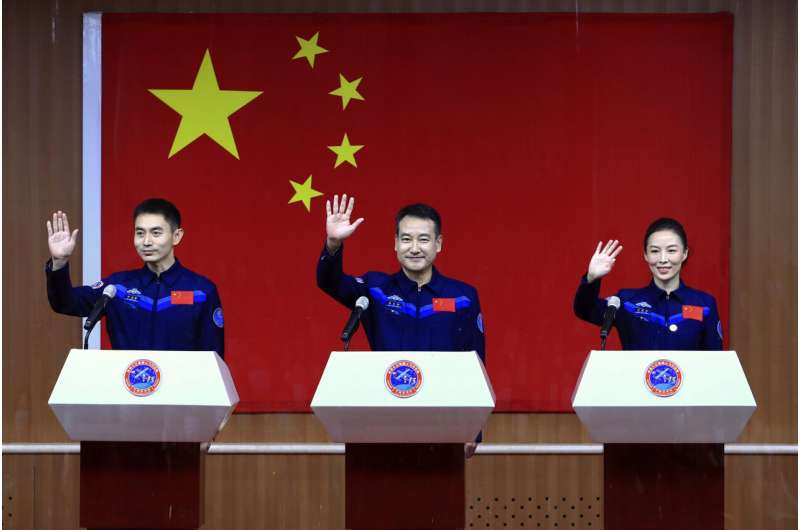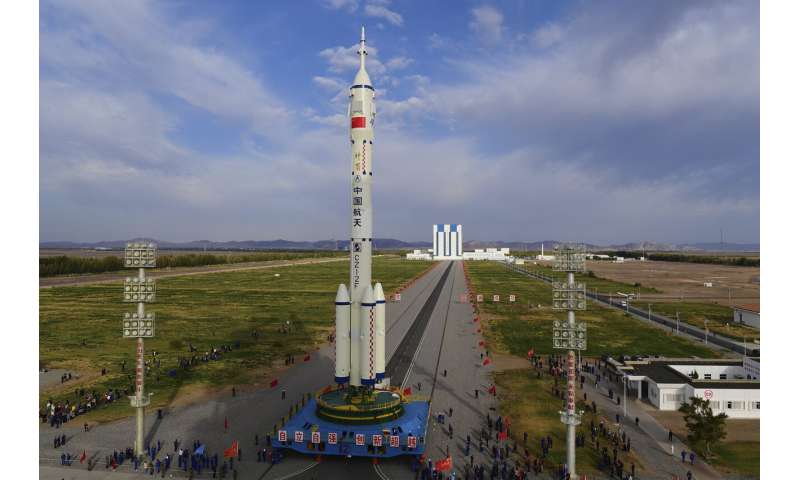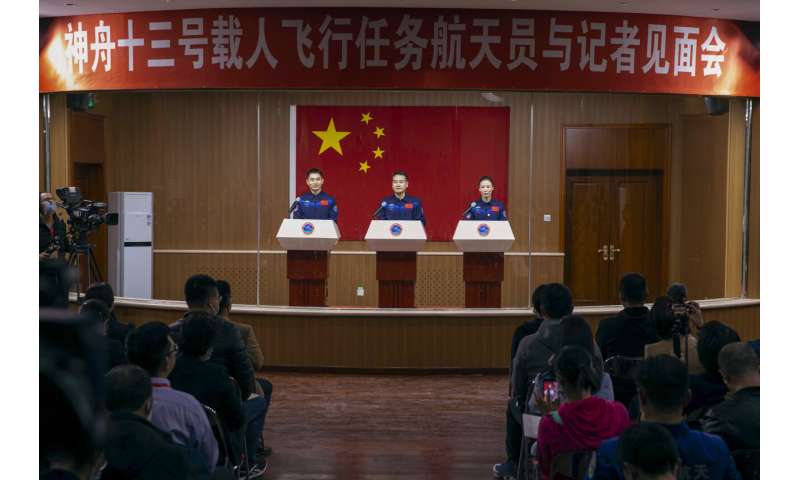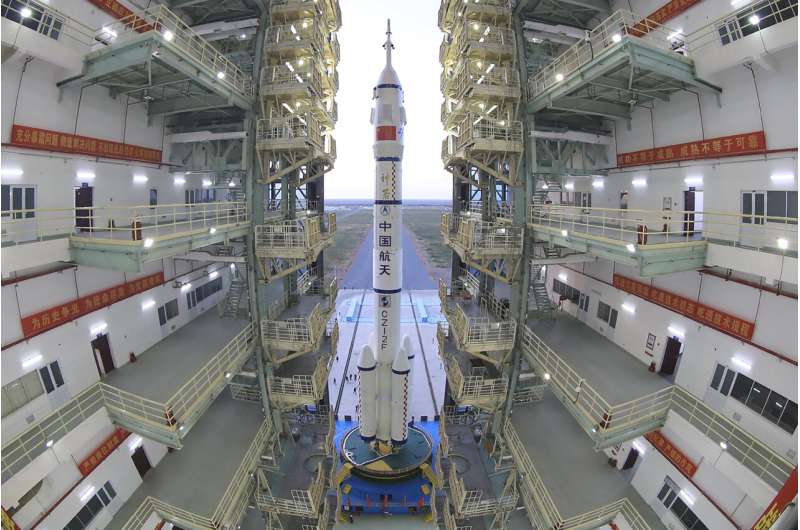Shortly ahead of sending a new three-person crew to its space station, China on Friday renewed its commitment to international cooperation in the peaceful use of space.
Foreign Ministry spokesperson Zhao Lijian said sending humans into space was a "common cause of mankind," and China would "continue to extend the depth and breadth of international cooperation and exchanges" in crewed spaceflight and "make positive contributions to the exploration of the mysteries of the universe."
China is to send two men and one woman to spend six months aboard the Tianhe core module of its space station, with liftoff from the Jiuquan Satellite Launch Center on the edge of the Gobi Desert in northwestern China scheduled for shortly after midnight Saturday.
It will be China's longest crewed space mission, a new milestone for a program that has advanced rapidly in recent years.
China was excluded from the International Space Station largely due to U.S. objections over the Chinese program's secretive nature and close military ties, prompting it to launch two experimental modules before starting on the permanent station.
U.S. law requires congressional approval for contact between the American and Chinese space programs, but China is cooperating with space experts from countries including France, Sweden, Russia and Italy. Chinese officials say they look forward to hosting astronauts from other countries aboard the space station once it becomes fully functional.

The Shenzhou-13 spaceship carrying the three astronauts will be launched by a Long March-2F rocket. Hours later, it is expected to dock with the Tianhe module, beginning the mission that will continue the work of the initial crew, who conducted two spacewalks and deployed a 10-meter (33-foot) mechanical arm before returning from their 90-day stay in mid-September.
The new crew has two veterans of space travel. Pilot Zhai Zhigang, 55, performed China's first spacewalk. Wang Yaping, 41, and the only woman on the mission, carried out experiments and led a science class in real-time while traveling on one of China's earlier experimental space stations. The third, Ye Guangfu, 41, has undergone training with the European Space Agency and will be traveling into space for the first time.
The crew's scheduled activities include up to three spacewalks to install equipment in preparation for expanding the station, assessing living conditions in the module and conducting experiments in space medicine and other fields.
China's military-run space program plans to send multiple crews to the station over the next two years to make it fully functional. Shenzhou-13 will be the fifth mission, including trips without crews to deliver supplies.

In this photo released by Xinhua News Agency, the Shenzhou-13 manned spaceship atop a Long March-2F carrier rocket is transferred to the launching area of Jiuquan Satellite Launch Center in northwestern China, Oct. 7, 2021. China is preparing to send three astronauts to live on its space station for six months—a new milestone for a program that has advanced rapidly in recent years. Credit: Wang Jiangbo/Xinhua via AP 
In this photo released by Xinhua News Agency, Chinese astronauts, from left, Ye Guangfu, Zhai Zhigang and Wang Yaping meet the reporters at a press conference at the Jiuquan Satellite Launch Center ahead of the Shenzhou-13 launch mission from Jiuquan in northwestern China, Thursday, Oct. 14, 2021. China is preparing to send three astronauts to live on its space station for six months—a new milestone for a program that has advanced rapidly in recent years. Credit: Ju Zhenhua/Xinhua via AP
When completed with the addition of two more modules—named Mengtian and Wentian—the station will weigh about 66 tons, a fraction of the size of the International Space Station, which launched its first module in 1998 and will weigh around 450 tons when completed. The two additional modules are due to be launched before the end of next year during the stay of the yet-to-be-named Shenzhou-14 crew.
China has launched seven crewed missions with a total of 14 astronauts aboard since 2003, when it became only the third country after the former Soviet Union and the United States to put a person in space on its own. Two Chinese astronauts have flown twice.
Along with its crewed missions, China has expanded its work on lunar and Mars exploration, including placing a rover on the little-explored far side of the Moon and returning lunar rocks to Earth for the first time since the 1970s.
China this year also landed its Tianwen-1 space probe on Mars, whose accompanying Zhurong rover has been exploring for evidence of life on the red planet.
Other programs call for collecting soil from an asteroid and bring back additional lunar samples. China has also expressed an aspiration to land people on the moon and possibly build a scientific base there, although no timeline has been proposed for such projects. A highly secretive space plane is also reportedly under development.
Explore further
© 2021 The Associated Press. All rights reserved. This material may not be published, broadcast, rewritten or redistributed without permission.



